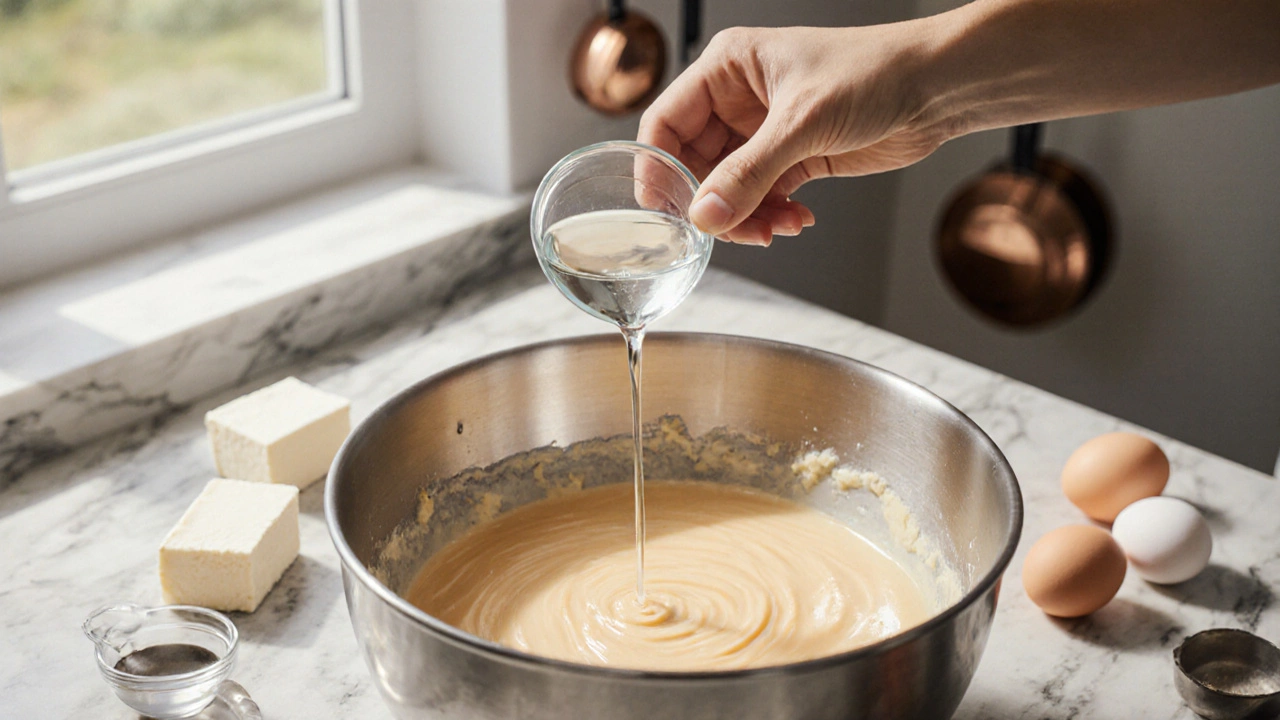Why Add Vinegar to Cheesecake? The Science Behind the Secret Ingredient
Discover why a splash of vinegar is a secret weapon in cheesecake, how much to use, best types, substitutes, and troubleshooting tips for flawless results.
When working with Vinegar, a fermented acidic liquid made from sugars or alcohol, used to add tang, balance flavors, and influence texture in cooking and baking. Also known as acidic starter, it reacts with other ingredients, helps preserve color, and can soften gluten networks. you’re actually tapping into a tiny chemistry lab that fits right in your pantry. Adding just a splash can change the way a cake rises, keep a frosting silky, or give a bright edge to a sugary glaze. Below we’ll walk through the most common reasons bakers reach for vinegar and how it pairs with everyday ingredients.
One of the biggest victories of vinegar is its partnership with baking soda, a sodium bicarbonate powder that releases carbon dioxide when combined with an acid. This reaction is the heart of leavening for quick breads, pancakes, and fluffy cupcakes. When you whisk vinegar into a batter that already contains baking soda, the rapid production of bubbles creates lift without the need for yeast. The trick is to add the acid at the right moment – typically right before baking – so you get maximum rise and a tender crumb. That’s why many recipes call for a teaspoon of white vinegar in chocolate cake batters; it lifts the cake while keeping the chocolate flavor deep.
Beyond rise, vinegar works as a gluten‑softening agent. In doughs for pretzels, pie crusts, or even pizza, a small amount of acid weakens the protein bonds that make the dough tough. This results in a more tender bite and a finer crumb. The science behind it is simple: the acid lowers the pH, which slows down gluten development. If you’ve ever added a splash of lemon juice to a biscuit mix and noticed an extra‑soft texture, you’ve experienced the same effect. Eggs play a similar role in structure, and for those who need a dairy‑free option, swapping a portion of the egg with vinegar‑buttermilk can keep the texture moist without sacrificing rise.
Acidity isn’t just about texture – it’s a flavor amplifier. A dash of vinegar can brighten a sweet frosting, cutting through excessive sugar and letting chocolate or vanilla notes shine. This is why many frosting recipes include a teaspoon of apple cider vinegar; it prevents the glaze from becoming cloyingly sweet and helps it set with a glossy finish. Sour cream, a cultured dairy product that adds tang and richness to desserts often works hand‑in‑hand with vinegar in cheesecakes and pies, delivering a balanced tang that keeps the palate interested.
Finally, vinegar is a natural preservative. In fudge, cake pops, or any dessert that sits for a day or two, a pinch of acid can inhibit bacterial growth and keep colors vivid. The low pH slows oxidation, so your chocolate stays dark and your fruit‑filled pastries retain their bright hues. This is especially handy for make‑ahead treats you plan to package for parties or gifts.
All these reasons show why vinegar is a go‑to ingredient for bakers who want reliable rise, tender crumb, bright flavor, and longer freshness. Below you’ll find a curated collection of articles that dive deeper into each of these uses – from how vinegar boosts your cookies’ chew to the science behind keeping fudge soft. Explore the posts and pick up practical tips you can test in your next bake.

Discover why a splash of vinegar is a secret weapon in cheesecake, how much to use, best types, substitutes, and troubleshooting tips for flawless results.